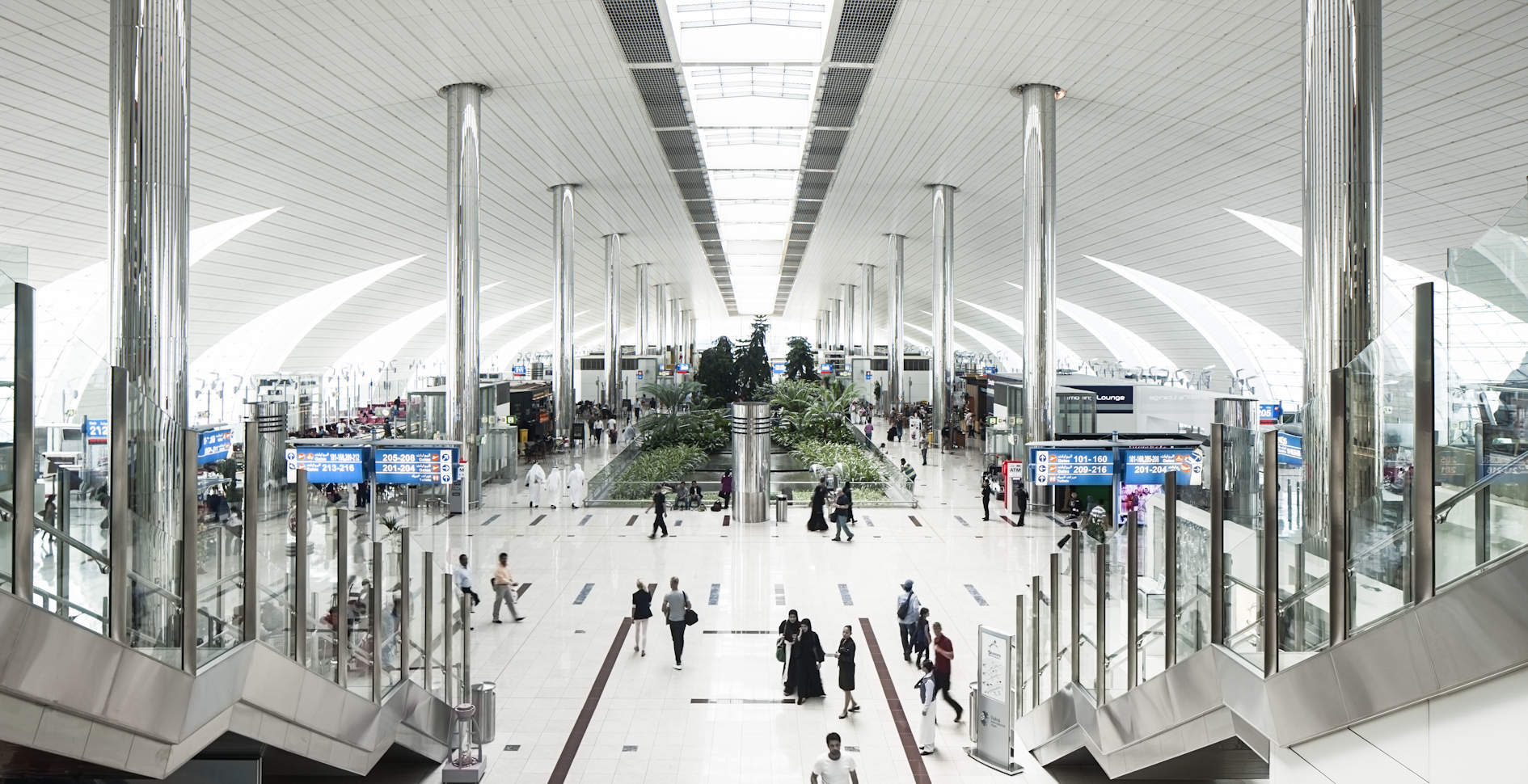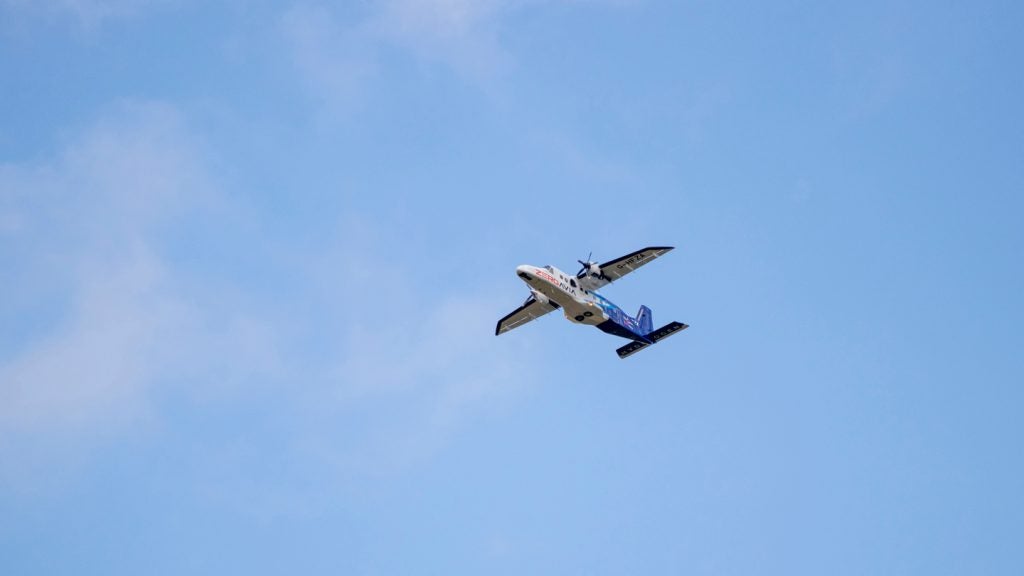
Dubai Airport handled 83.6 million passengers in 2016. With the International Air Transport Association (IATA) expecting 7.2 billion passengers to travel in 2035, which almost doubles the 3.8 billion air travellers worldwide in 2016, developing international biometric security solutions that can streamline passenger experience are a key part of the airport’s future plans. However, Michael Ibbitson says the problem of proving the business case makes it difficult to progress with solutions in reality.
The gap between reality and the future of biometrics was brought to light recently after a demonstration by the immigration department at Dubai’s GITEX Technology Week show, in October 2017, which presented a virtual aquarium tunnel that would biometrically register passengers with 80 hidden cameras instead of using traditional security procedures.
A clever and unique way of scanning passengers for their biometric identity while they seamlessly traversed the airport, the media was awash with news articles, some announcing that this new addition to Dubai International Airport would be rolled out in 2018. Certain media channels even went so far as to state that Dubai Airport was “doing away with security counters next year” and would be “introducing virtual fish to verify your identity instead”.
Yet what was presented by Dubai’s immigration department at GITEX was purely a concept that was created in a response to ongoing discussions about how to handle the growing number of passengers at the airport.
“We have a very forward-thinking immigration service, but the tunnel came up as a concept for how you might achieve a non-stop process if you had all the technologies to support it,” explains Ibbitson. “Those technologies may be here in the next few years, but it was more to show what could be possible, and how queues could be eliminated in the future.”
The complexities behind a biometrics business case
Having come from Gatwick Airport, where he spent three years as chief information officer driving technology innovation before moving to Dubai, Ibbitson has been involved in many biometric-related trials. One, in 2013 at Gatwick Airport, saw 3,000 British Airways (BA) passengers use their iris to bag drop, pass through security and then board the aircraft without any further documentation.
How well do you really know your competitors?
Access the most comprehensive Company Profiles on the market, powered by GlobalData. Save hours of research. Gain competitive edge.

Thank you!
Your download email will arrive shortly
Not ready to buy yet? Download a free sample
We are confident about the unique quality of our Company Profiles. However, we want you to make the most beneficial decision for your business, so we offer a free sample that you can download by submitting the below form
By GlobalData“We did it very successfully across 40 flights in a one-month period,” he says. “But the problem is that it’s extremely hard to make a business case stack up, especially when BA only has 19% of the traffic at Gatwick, and the investment you have to make to support biometrics is sizeable.”
Airport size, the unreliability of day-to-day operations, the lack of a standardised system and high infrastructure costs make widespread implementation prohibitive for the time being.
“At Dubai we have more than one hundred gates, so if we put the biometric hardware on every single one of those gates – because you only know where the plane will park on the day due to operational conditions – you might only use it once a day for one airline,” he explains. “It’s hard to make a business case without a commitment from all the airlines to use the system – and then how do you get them all to integrate with it? So, it becomes a very complex situation to try and unravel.”
A logistical challenge
In the case of Dubai Airport, which receives around 243,000 passengers a day – with peak hour throughput on a busy day in Terminal 3 reaching 13,000 – Ibbitson says around 30% are departing directly from the United Arab Emirates (UAE). Every “local” passenger is registered for biometrics inside the UAE, as the same system is used across the federation’s seven emirates: Abu Dhabi, Ajman, Dubai, Fujairah, Ras al-Khaimah, Sharjah and Umm al-Quwain.
With the remaining 70% arriving to transfer, the question over how to register what could be 10,000 people in one hour is a serious logistical challenge, especially considering the airport serves around 230 destinations from this airport, meaning it needs to collect passengers’ biometric information at 230 different places.
“How do you register 10,000 people in one hour for biometrics? It’s going to be another queue at the airport, so there is little point in adding it to improve the passenger experience,” he says, adding that the launch of Apple’s new Face ID solution makes mass biometric registration at the start of a passenger’s journey more of a possibility than ever before.
“That’s why we have come to the decision if you’re going to apply these biometrics and improve the journey and passenger experience it has to be a standard solution that works for all airlines and all airports.”
The importance of a standard global network
Ibbitson says that his team is supporting IATA’s One ID Passenger Facilitation Working Group. Through One ID, IATA is coordinating a global network to facilitate a streamlined process for passengers at airports to reduce repetitive identity checks through a single token (or “One Identity”), which is based on biometric data, such as facial, fingerprint or iris recognition.
A single token involves authenticating a (mobile) passport, associating the ID to a token, connecting biometric to biographic data and presenting the token at touchpoints to then walk seamlessly through the airport space. Aruba, Changi, Brisbane and Schiphol airports have so far all been trialling and testing a single token authentication process.
Towards the end of 2017, Dubai Airport also completed a trial with passengers travelling from Gatwick to Dubai. “The passengers registered into a biometric system that was separate to the main infrastructure,” explains Ibbitson. For this trial they implemented the MFlow system software from Human Recognition Systems (HRS), with hardware in the form of a handheld device from Tascent, which enables the efficient capture of iris, fingerprint, and face biometrics. The data was uploaded into the Cloud and accessed through a secure database in Dubai.
Lasting for several flights over three days on 30 passengers per flight, the trial ran seamlessly and was a success. Ibbitson says one of the most interesting and encouraging results was from a survey they carried out of 100 passengers, where 68% said they didn’t think using biometrics in an airport setting is intrusive, while 82% said they were comfortable with having their biometric information captured.
When asked whether deployment of this technology could speed up their time during transit at Dubai Airport, 87% said it could. When questioned over what type of biometric they would be comfortable with, 30% more passengers preferred the use of the iris over the face.
“It was a challenge getting all the entities involved to agree for the legal documentation, but meeting the data protection requirements of the EU was the real mission,” he says.
A connected biometric future
After four years of discussions, the General Data Protection Regulation (GDPR), which was approved by the EU Parliament on 14 April 2016, will be enforced on 25 May 2018. It replaces the Data Protection Directive 95/46/EC and has been designed to harmonise data privacy laws across Europe. It applies to all companies processing and holding the personal data of data subjects residing in the EU, regardless of the company’s location. A breach will cost 4% of annual global turnover or €20m.
Proving that the trial could legally meet all requirements has boosted plans for a further trial next year, which will be a three-point trial with Gatwick Airport, Dubai Airport and an Australian Airport, which can’t, at the time of writing, be revealed.
“Australia has quite an advanced biometrics system as well, so we’re planning to do a complete journey,” Ibbitson says. “Passengers will record their biometric data in Gatwick, fly to Australia via Dubai, and then return two to three weeks later.”
All the systems used will be different though, he adds, underlining that standardised, non-proprietary systems, where all stakeholders are involved, are crucial to future global success in this area.
But what about the virtual fish aquarium, could Ibbitson ever see it being rolled out at Dubai Airport?
“The tunnel would be so much more viable if you’ve got one system that links everybody together,” he says. “Then if you can register your biometrics via your smartphone in a way that is seamless and secure, you would never need a physical visa stamped in your passport.”







